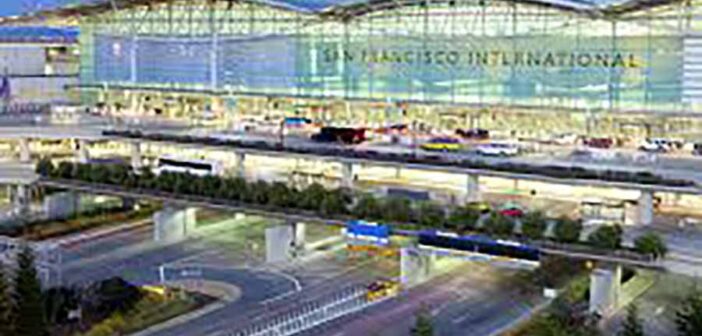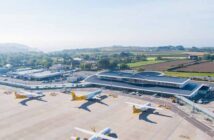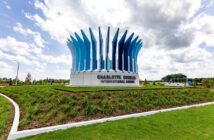San Francisco International Airport, known as SFO, serves as a major hub for the Bay Area, handling over 57 million passengers annually with flights to more than 125 destinations worldwide. Operated by the City and County of San Francisco, it acts as a key base for United Airlines and Alaska Airlines, offering a well-equipped gateway for both domestic and international travellers. Its modern facilities and thoughtful amenities ensure a pleasant journey for those passing through.
Accessing SFO is convenient, with a range of transport options connecting the airport to San Francisco’s city centre, 14 miles away. The Bay Area Rapid Transit (BART) system provides a direct 30-minute ride to downtown for around $10, with the station located in the International Terminal and accessible via the free AirTrain from other terminals. SamTrans buses, such as routes 292 and 398, offer a budget-friendly alternative at $2.25, taking 40 to 55 minutes to reach the city.
Taxis and rideshares like Uber and Lyft are readily available curbside, costing $40-50 for a 25-minute trip, depending on traffic. For drivers, the airport’s location off Highway 101 offers easy access, with short-term parking at $4 per 30 minutes and long-term options at $18 per day. Pre-booking parking online is recommended during busy periods to secure a spot. The AirTrain’s Red Line connects terminals, while the Blue Line links to the Rental Car Center, making navigation seamless.
The airport’s layout consists of four terminals—Terminal 1 (Harvey Milk), Terminal 2, Terminal 3, and the International Terminal—arranged in a loop. Terminal 1 serves airlines like Delta and Southwest, Terminal 2 hosts Air Canada and Breeze Airways, Terminal 3 is dedicated to United Airlines, and the International Terminal handles global flights with concourses A and G. Airside connectors allow passengers to move between terminals post-security, though walking between the farthest points, like Terminal 1 to Terminal 3, can take 15-20 minutes. Clear signage and the AirTrain ease navigation, but passengers should note that no direct airside link exists between the International Terminal’s A and G gates, requiring a security re-check for some connections.
Security checkpoints, with TSA PreCheck and CLEAR lanes, typically process passengers in 10-15 minutes, though arriving two hours early for domestic flights and three for international is advised.
Delays at SFO are generally minimal, with average departure delays around 15 minutes, but fog, particularly in summer, can disrupt schedules, especially for low-cost carriers. Peak travel times, such as holidays, may lead to longer queues at check-in, security, or immigration, so checking flight status via airline apps is recommended. The airport’s on-time performance is solid, bolstered by its role as a hub for United and Alaska Airlines, though weather and air traffic control issues across the US. can occasionally affect operations.
Dining options cater to a wide range of tastes across all terminals. Terminal 1’s Farmerbrown offers Southern comfort food like fried chicken, while Terminal 2 features healthy choices at places like Amy’s Drive Thru. The International Terminal’s marketplace includes Koi Palace for Chinese cuisine and Potrero Grill for burgers and pizza. Terminal 3’s food court provides diverse options, from sushi to sandwiches. Retail is equally robust, with duty-free shops in the International Terminal offering designer fashion and premium spirits, alongside local stores like San Francisco Bay Traders for souvenirs. Terminal 3 boasts a mix of high-end and casual shops, perfect for last-minute gifts.
Facilities enhance the travel experience, with free Wi-Fi available throughout by connecting to SFO FREE WIFI Charging stations are plentiful, and seven Kids’ Spots with interactive displays keep children entertained in Terminals 1, 2, and 3. Accessibility is prioritised, with wheelchair assistance, disabled parking, and barrier-free facilities available upon request. Lounges, such as the United Polaris Lounge in the International Terminal and Delta Sky Club in Terminal 2, offer food, drinks, and showers for eligible passengers. A unique yoga room in Terminals 2 and 3 provides a calm space to relax, and the SFO Museum showcases art installations across the terminals. Baggage services include storage, wrapping, and porters, with a Lost and Found office in Terminal 1. Nearby hotels, like the Grand Hyatt with its own AirTrain stop, cater to layovers, and the airport operates 24/7.
Connections are efficient, with airside walkways linking Terminals 1, 2, 3, and the International Terminal’s G gates, allowing passengers to stay within the secure area. Minimum connection times are around 45 minutes for domestic and 90 minutes for international flights, though international-to-domestic transfers require clearing customs and re-checking luggage, necessitating at least two hours. The lack of a direct airside link between the International Terminal’s A and G gates means some passengers must re-clear security, so planning ample time is key.




